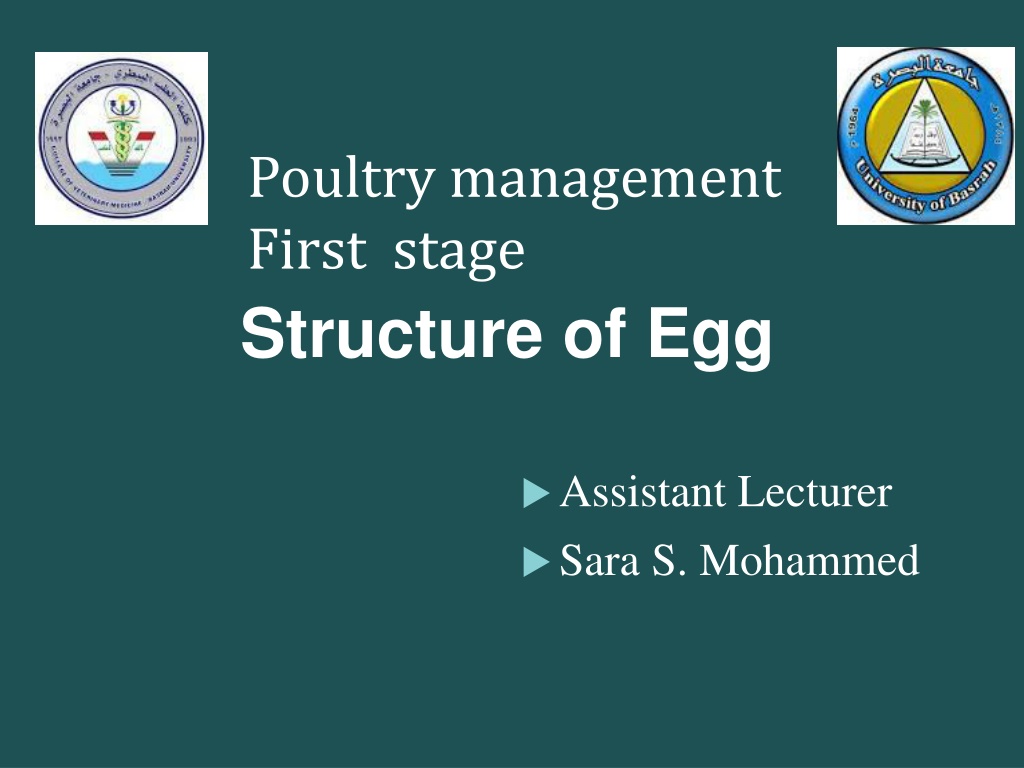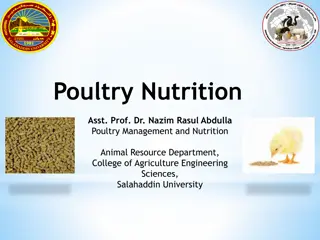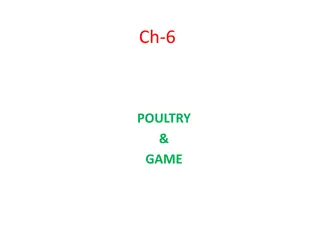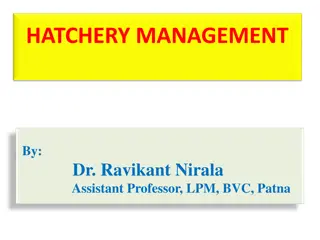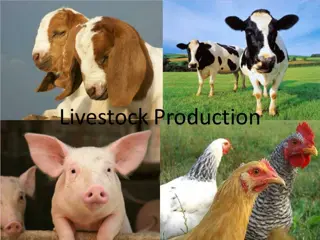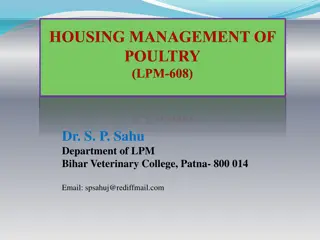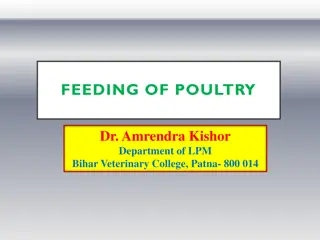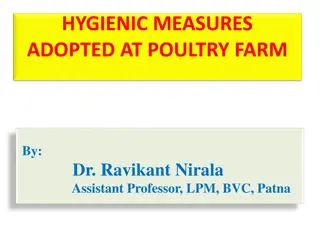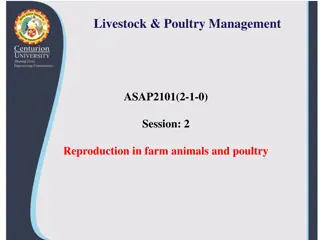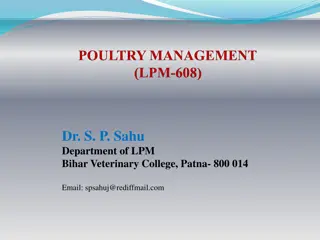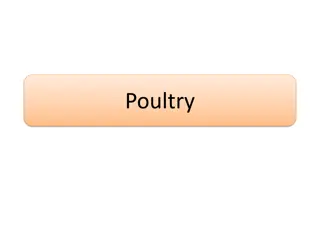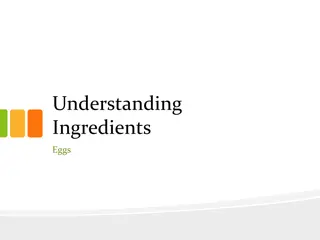Understanding the Structure of Eggs in Poultry Management
Eggs in poultry management consist of the yolk, albumen, shell membrane, and shell. The yolk is the yellow center surrounded by the vitelline membrane. The albumen makes up most of the egg and has two layers - outer thin white and inner thick white with chalazae. The shell membrane and shell protect the egg, while the air cell forms at the large end. The egg shell is composed mainly of calcium carbonate with tiny pores for gas exchange.
Download Presentation

Please find below an Image/Link to download the presentation.
The content on the website is provided AS IS for your information and personal use only. It may not be sold, licensed, or shared on other websites without obtaining consent from the author. Download presentation by click this link. If you encounter any issues during the download, it is possible that the publisher has removed the file from their server.
E N D
Presentation Transcript
Poultry management First stage Structure of Egg Assistant Lecturer Sara S. Mohammed
Structure of Egg The egg consists of :- 1) yolk. 2) albumen or egg white. 3) shell membrane. 4) shell.
1)Yolk: A rounded yellowish colored material is present at the center of egg, it is called egg yolk and is enclosed by a thin membrane called vitelline membrane which is colorless. It accounts for about 31 % of the total egg weight.
GerminalDisk: A small, circular, white spot (3-4mm) on the surface of the yolk, it s where the sperm enters the yolk, and it s called blastoderm in fertile egg and blastodisc in infertile egg.
2) Albumen or Egg White: The albumen accounts for about 58% of the total egg weight. The albumen consists of two layers: a) outer thin white. b) inner thick white. The inner thick white layer (chalaziferous layer). Two thick spiral band are emerged from chalazae. of albumen is also known as this layer, known as
Chalazae: Two emerged from chalaziferous layer. They are joining the yolk to the ends of the shell to hold the yolk in the centre of the egg. Prominent chalazae high quality egg (fresher the egg). thick spiral band are indicate
3) Shell Membrane shell membranes membrane and inner shell membrane. They form a protective barrier against bacteria. and about 11 % constitute weight. two outer shell The shell shell membranes of total egg
AirCell: It is the pocket of air formed at the large end of the egg. This is caused by the contraction of the contents on cooling after the egg is laid. The air cell increases with the age of the egg as there is amount of moisture loss. considerable
4) Egg Shell: It is the outer covering of the egg and is composed of calcium carbonate CaCo3 (94%), and (4%) protein and is covered with as many as 1700-7500 tiny pores on it which helps in gaseous exchange required for embryo development. The shell is covered transparent protein cuticle, It gives natural protection to the shell pores. by a thin called coating,
Chemical Composition Nutritive Value of Egg Egg contains almost all nutrients in balanced proportion. Egg is rich in protein and low in caloric value. Egg protein is an excellent quality protein of high biological value and it is often used as a standard for measuring the quality of other food proteins. B.V. of egg protein is 95, milk protein 85 and meat protein 70. The high biological value of egg protein is due to its amino acid makeup. Most of the essential amino acids required by human beings are present in egg in balanced proportion.
Chemical Composition Nutritive Value of Egg Almost all vitamins are present in eggs excepting vitamin C. The fat soluble vitamins(like A, D, E) are mainly concentrated in the yolk part. water soluble vitamins (mainly B2,B6, BI2 , pantothenic acid, niacin) are present both in the albumen and yolk parts of egg. Egg is very rich in vitamin D content.
Chemical Composition Nutritive Value of Egg minerals like calcium, magnesium, potassium, sodium, chlorine, sulphur, zinc, copper and iodine are present in lesser extent. Egg is also known for its fatty acids. The saturated and unsaturated fatty acids and cholesterol are mainly present in the yolk portion of the egg.
